Inside North Korea: a pastel mirage of sci-fi architecture

In a globalised world, the Democratic People’s Republic of Korea is utterly unique. Hermetic, heavily censored, and dominated by the cult-like image and ideology of the Supreme Leader, the Juche nation has become more open to tourists in recent years—but only on guided tours.
In a new book by architecture and design critic Oliver Wainwright – Inside North Korea – the world’s most secretive country is explored in photographs (also taken by Wainwright) of its architecture, sports grounds, museums, theatres and public monuments, most of them eerily empty and unanimated. The somewhat morbid attraction abroad to North Korea and the idea of the Hermit Kingdom as what he describes as ‘fascinating stage set’, is at odds with its deeply controversial politics and human rights violations.
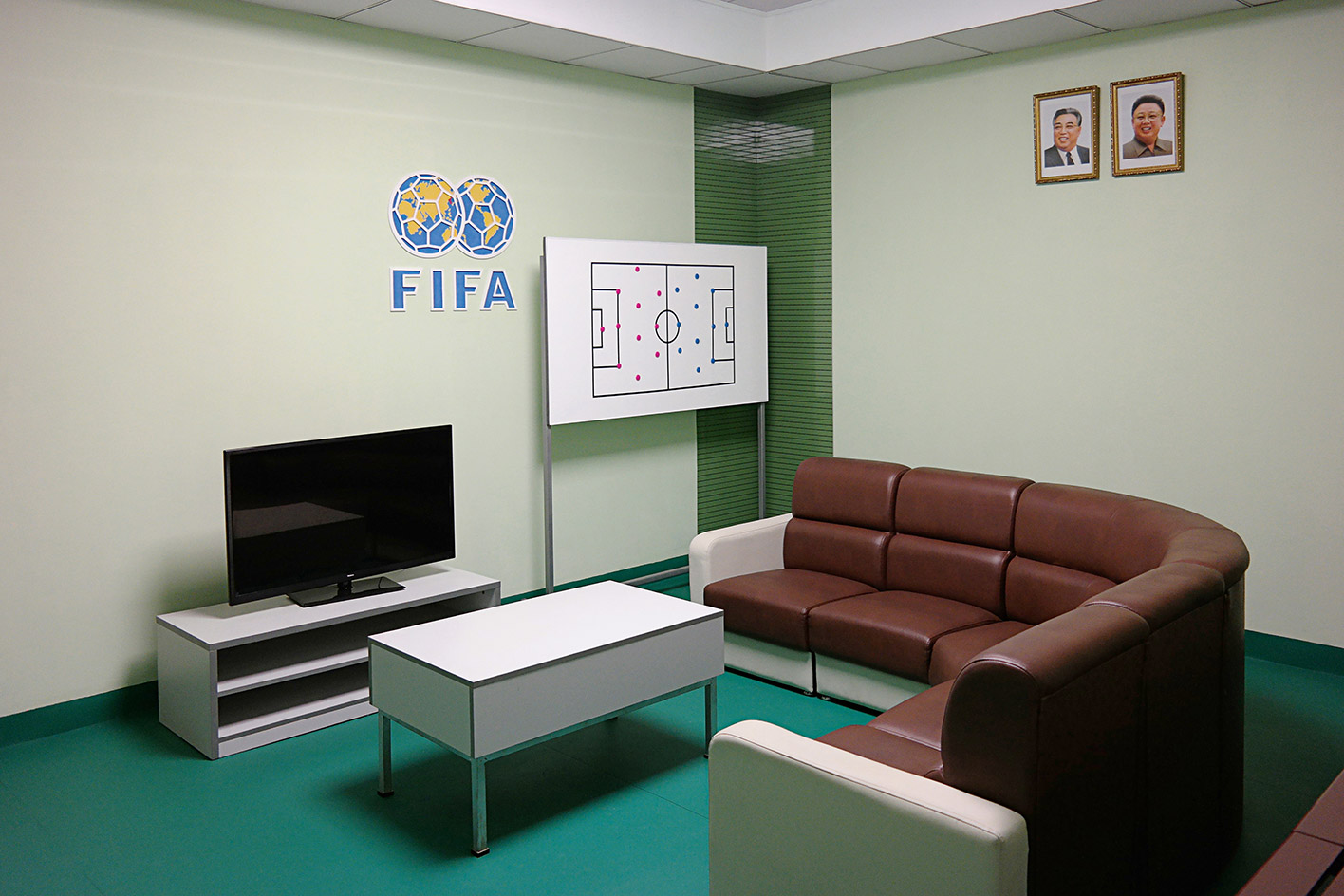
The recently renovated support rooms of the Rungrado May Day Stadium embody the essence of the current North Korean interior aesthetic. Built in 1989 and used for the Mass Games performances for years, the stadium reopened in 2015 with a new football pitch and running track, as well as the addition of the FIFA and Olympic logos. Courtesy of Taschen
Wainwright conjures a picture of North Korea you might not expect: he writes of a visit to Pyongyang in 2015 and encountering its pastel-coloured cityscape for the first time; he notes the nature-oriented planning of the city, built from scratch in 1953, surprising for a Soviet city. Other surprises are glimpses of the striking exteriors of the Pyongyang Circus; the Rungna People’s Pleasure Ground, a theme park completed in 2012 offering a mini-golf course, swimming pool and 4D cinema with moving seats; and the Yanggakdo International Hotel, with its bowling alley and sauna, and over 1,000 rooms for foreign guests.
Despite the ethics of celebrating these government sanctioned buildings, the book draws you in to the sci-fi beauty of the distinct North Korean aesthetic. ‘Architectural space must be composed to ensure that the leader’s image dominates all the elements of the space, and that all the architectural components throw the leader’s image in bold relief,’ declaimed King Jong Il.
With principles such as these, the buildings and their interiors are a conditioned kind of architecture, designed with one person in mind – and this is the version of ‘inside North Korea’ that a guided tour in the country will allow. As Wainwright reminds us, in such a controlled and isolated environment, there is possibly far more to see than meets the foreign eye.
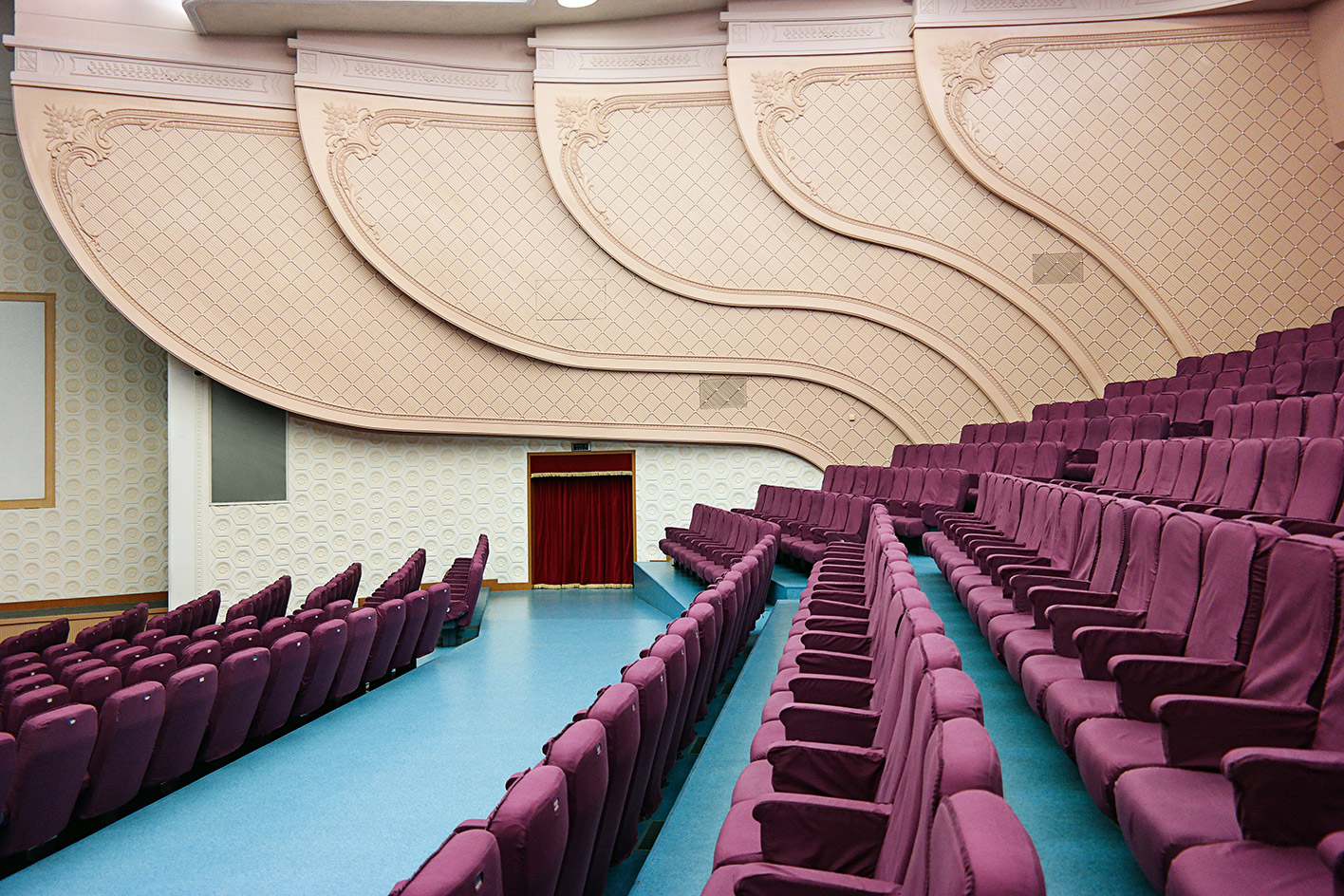
An interlocking composition of two buildings, one semicircular, one rectangular, the East Pyongyang Grand Theatre from 1989 houses an auditorium with an audience capacity of 3,500, along with dozens of rehearsal rooms. Renovation in 2007 saw the lobby fitted with plaster mouldings, highly polished stone tiles and a huge relief mural on the wall, while the theatre was decorated with scalloped peach-coloured walls, purple-upholstered seats and a bright-blue vinyl floor. Courtesy of Taschen
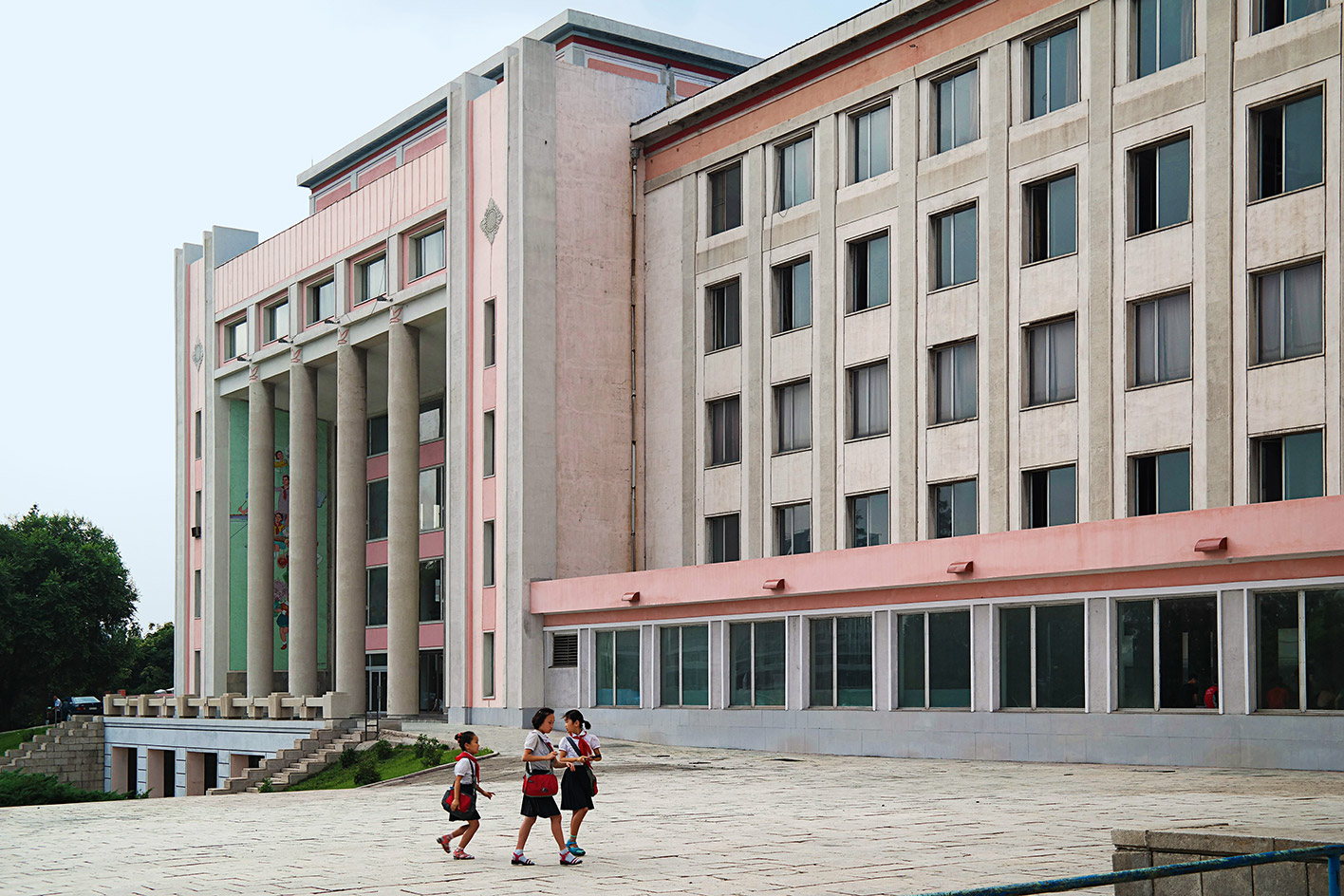
With 500 rooms covering an area of 50,000 sq m, the Students’ and Children’s Palace was built in 1963 as a place for extracurricular activities after school, with a 1,000 seat theatre, an indoor stadium, library and rooms for science, literature, art, industry and agriculture. Courtesy of Taschen
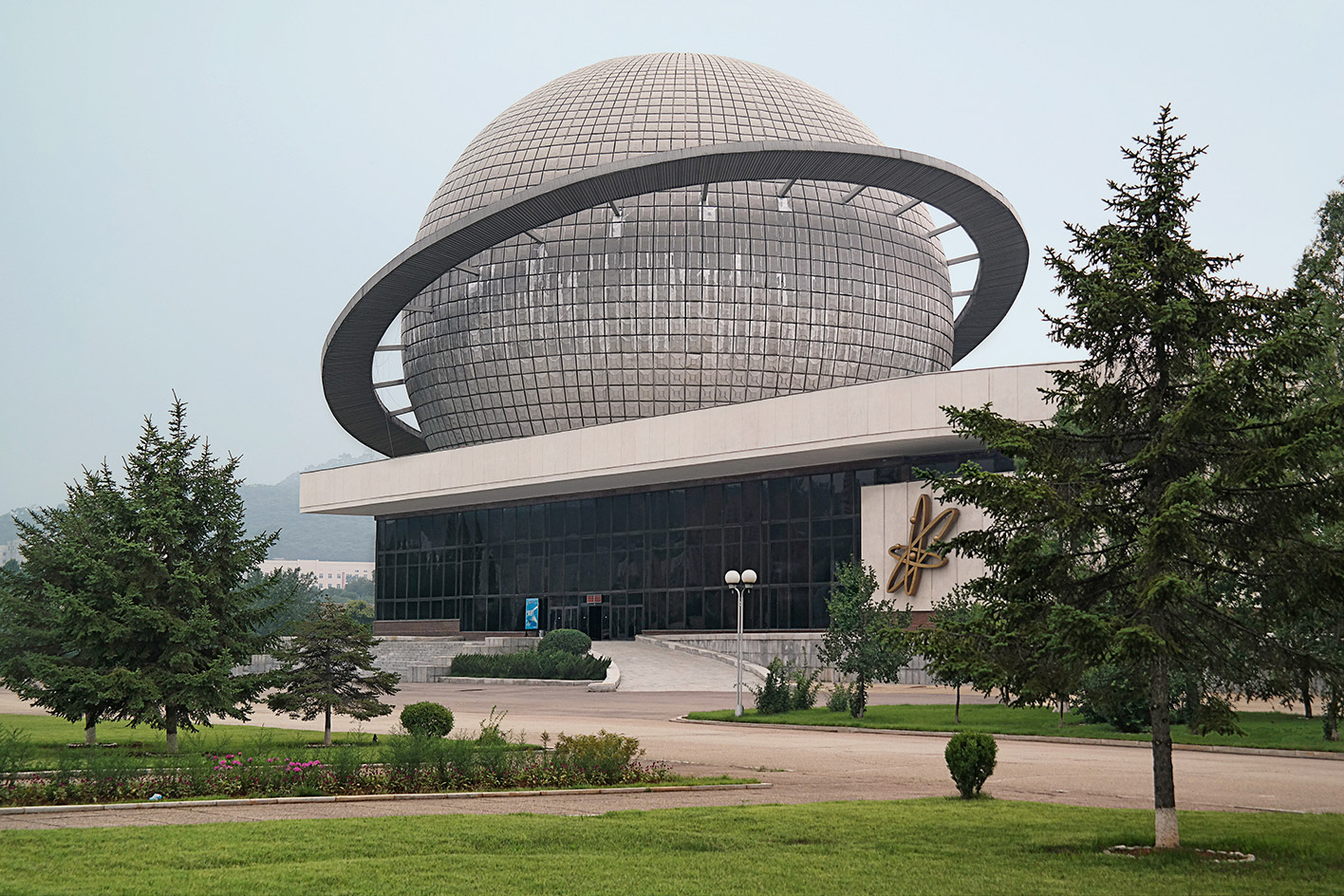
The planetarium forms part of the Three Revolutions Exhibition park, a grand campus built in 1992 to showcase the ideological, technological and cultural achievements of North Korea, from heavy industry and mining to agriculture and electronics. Courtesy of Taschen
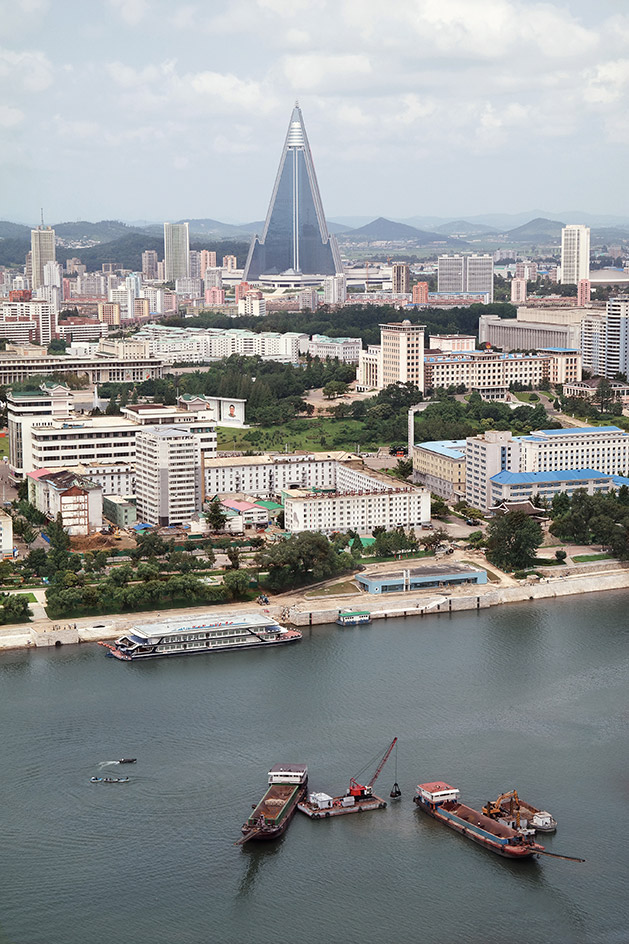
Begun in 1987 but still unopened, the Ryugyong Hotel was intended to house 3,000 bedrooms and five revolving restaurants. It stood on the Pyongyang skyline for years as a concrete carcass, nicknamed the ‘hotel of doom’, but was finally clad with mirrored glass in 2012 as part of a deal with an Egyptian telecoms company. Courtesy of Taschen
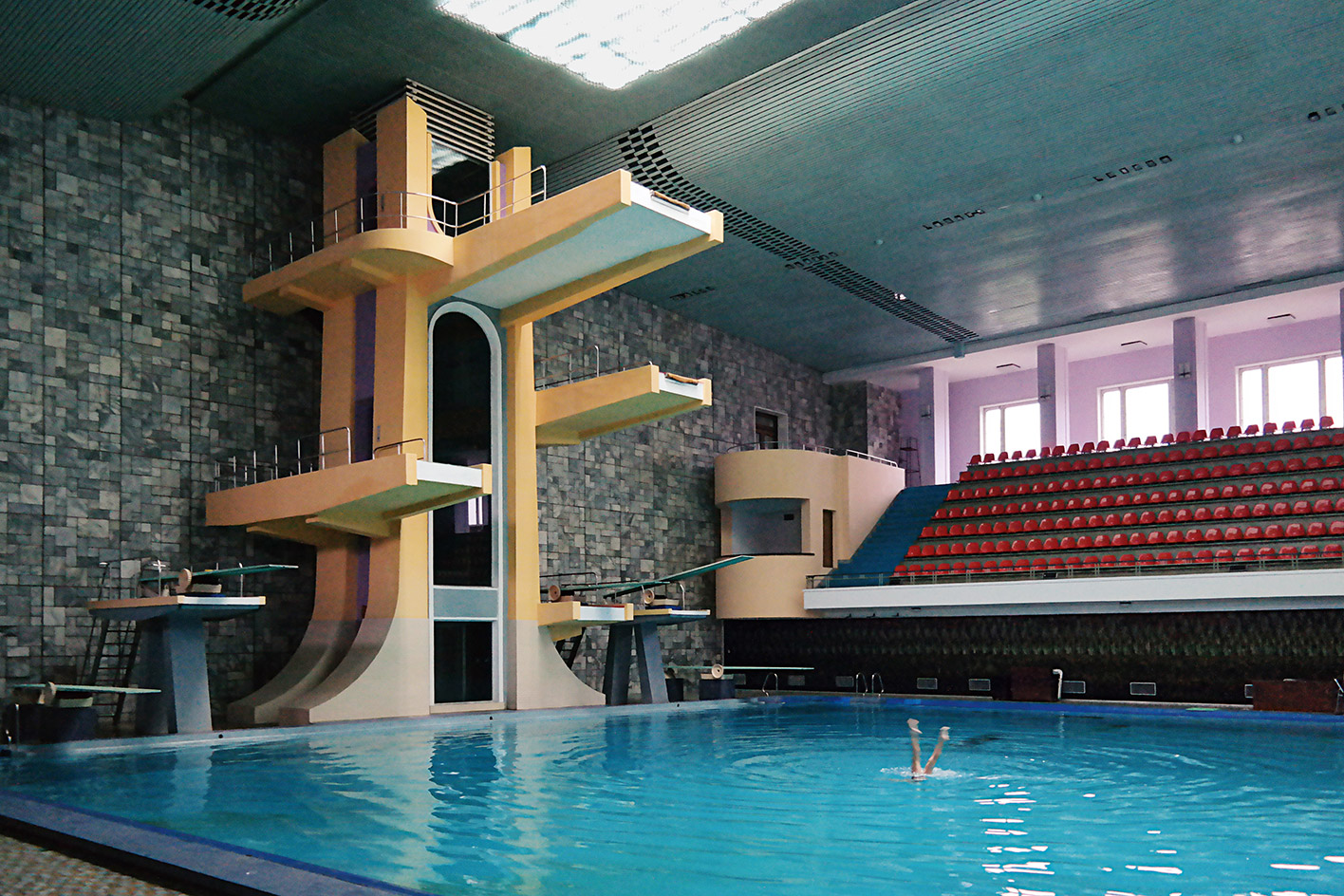
The Changgwang Health and Recreation Complex was the city’s flagship health centre when it opened in 1980. Covering an area of almost 40,000 sq m, it contains a sauna, bathhouse, swimming pools and hair salons. In a futuristic touch, the diving boards are reached by a mechanical elevator in a shaft faced with smoked glass. Courtesy of Taschen
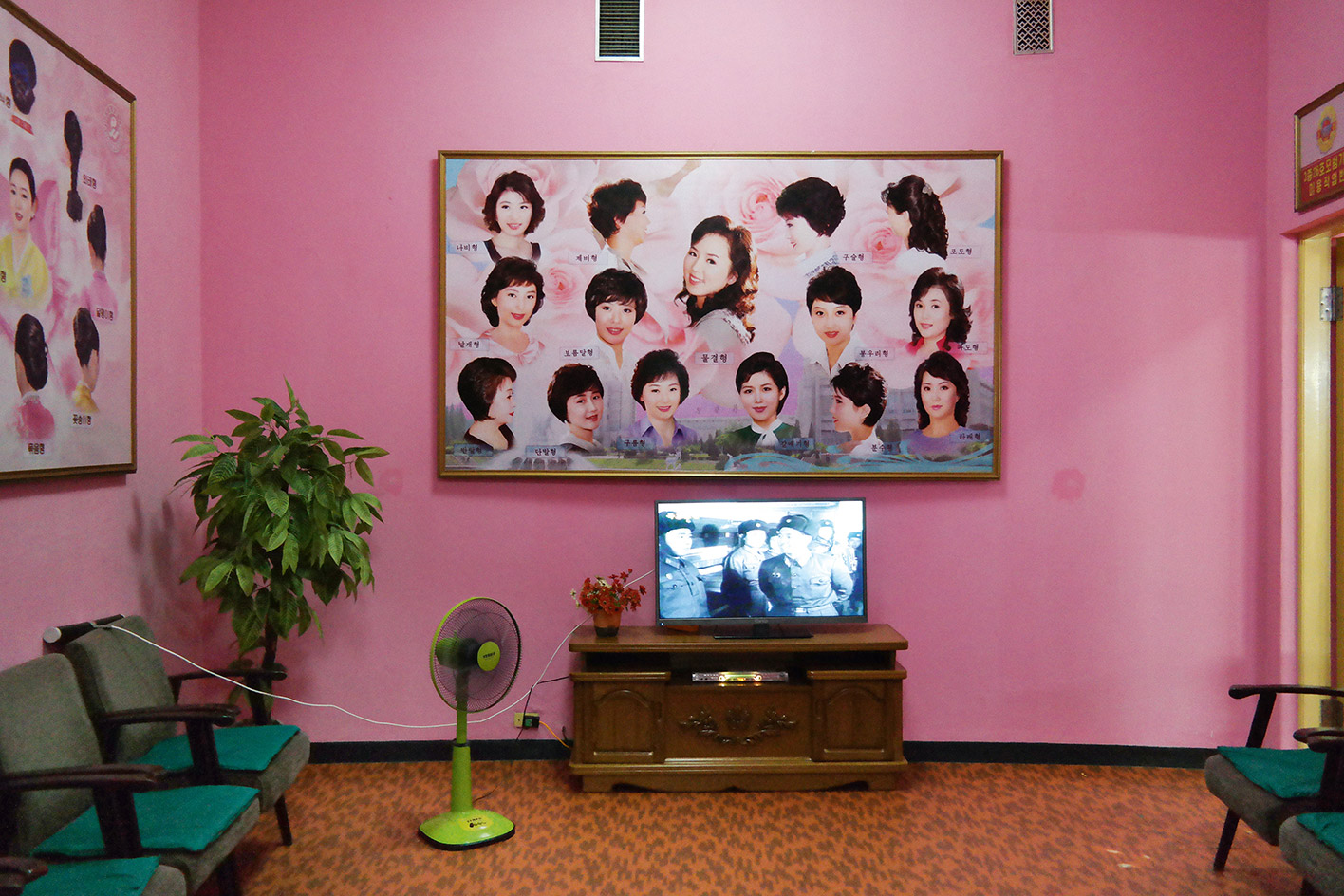
The hair salon at Changgwang Health and Recreation Complex, where customers can choose from a range of officially sanctioned haircuts. Courtesy of Taschen
INFORMATION
Inside North Korea, £40, published by Taschen
Receive our daily digest of inspiration, escapism and design stories from around the world direct to your inbox.
Charlotte Jansen is a journalist and the author of two books on photography, Girl on Girl (2017) and Photography Now (2021). She is commissioning editor at Elephant magazine and has written on contemporary art and culture for The Guardian, the Financial Times, ELLE, the British Journal of Photography, Frieze and Artsy. Jansen is also presenter of Dior Talks podcast series, The Female Gaze.
-
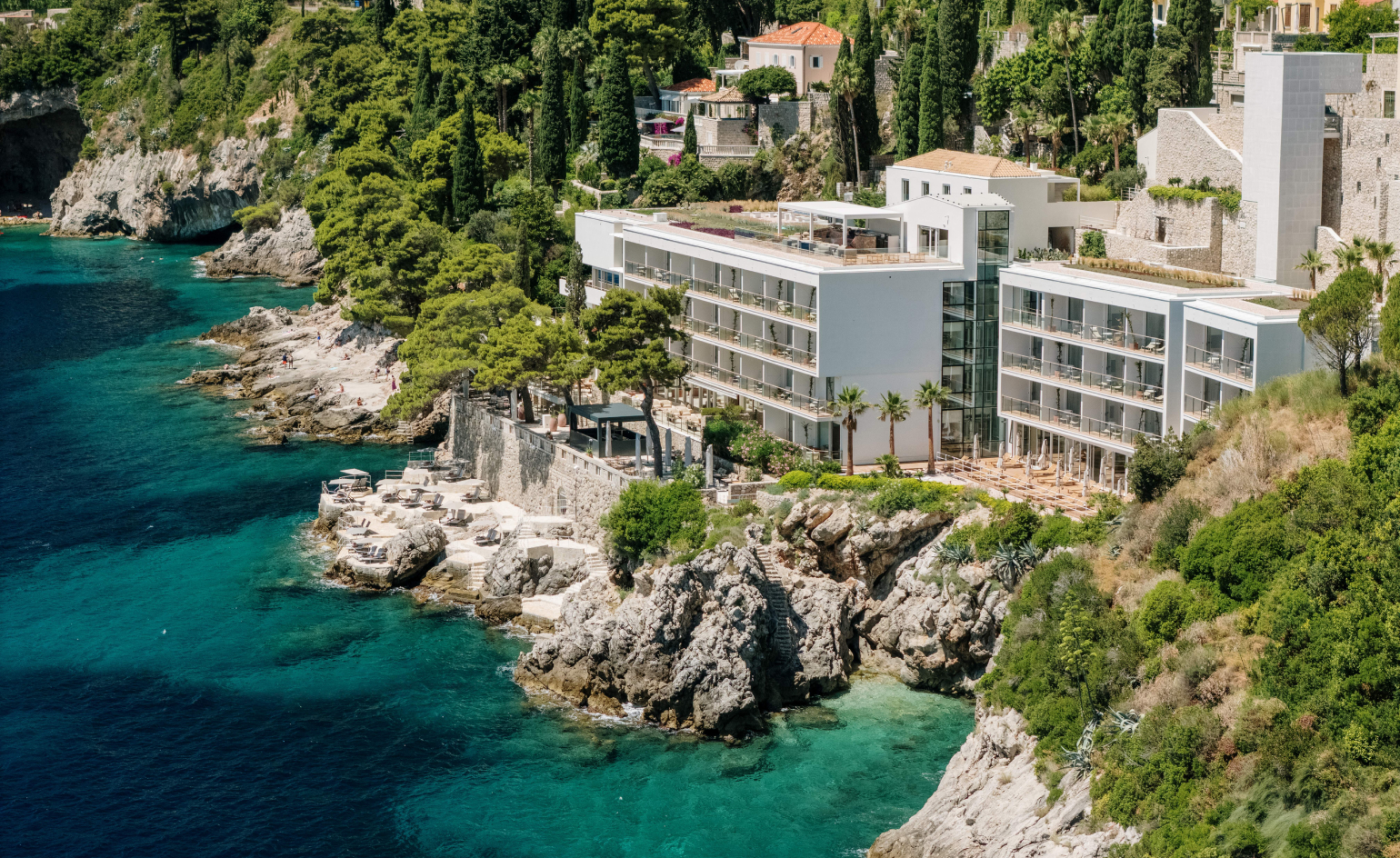 Arthur Casas reimagines Villa Dubrovnik as a modern Adriatic retreat
Arthur Casas reimagines Villa Dubrovnik as a modern Adriatic retreatThe Brazilian architect brings poetic restraint and light to Croatia’s most elegant coastal hotel
-
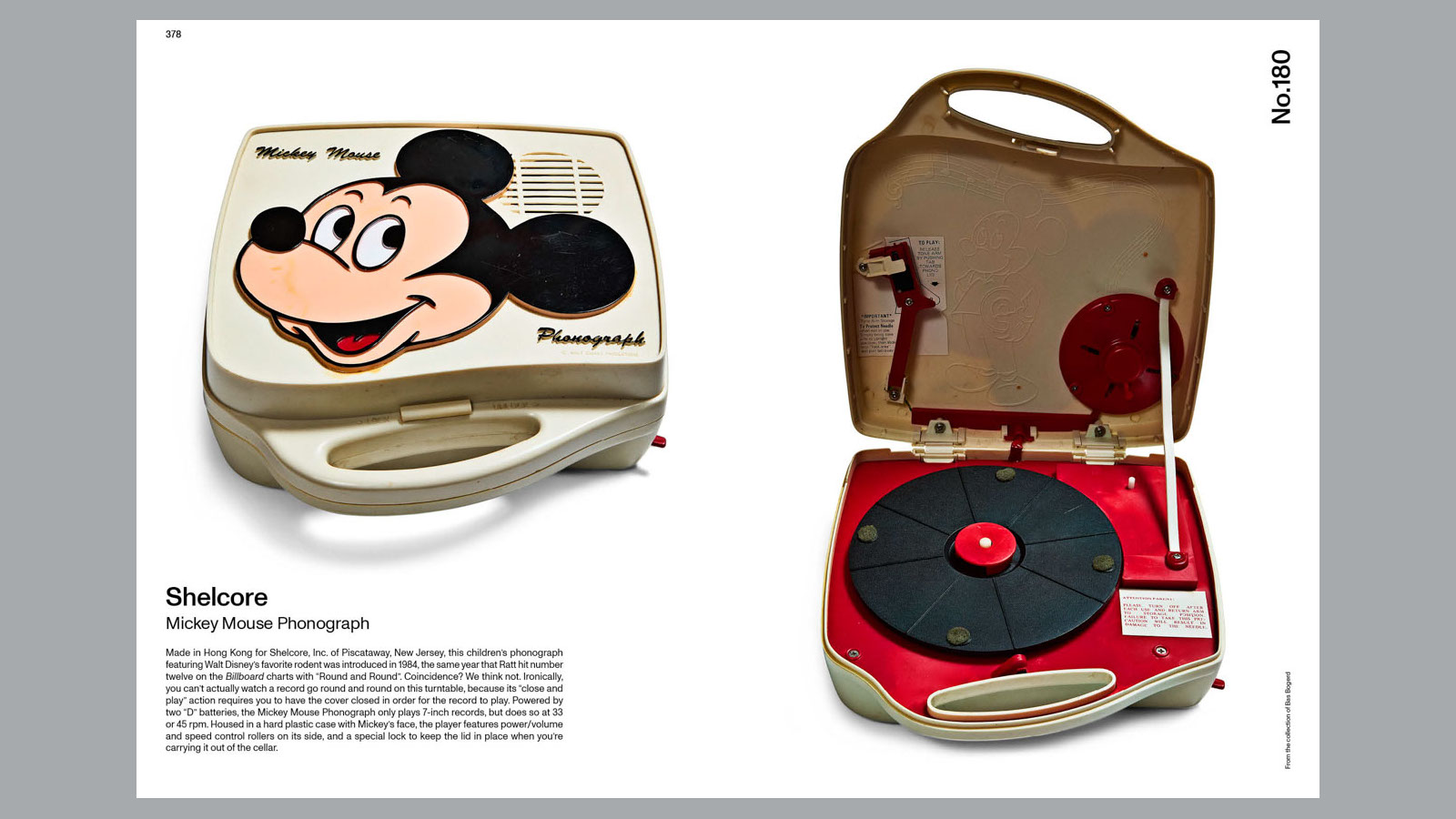 14 of the best new books for music buffs
14 of the best new books for music buffsFrom music-making tech to NME cover stars, portable turntables and the story behind industry legends – new books about the culture and craft of recorded sound
-
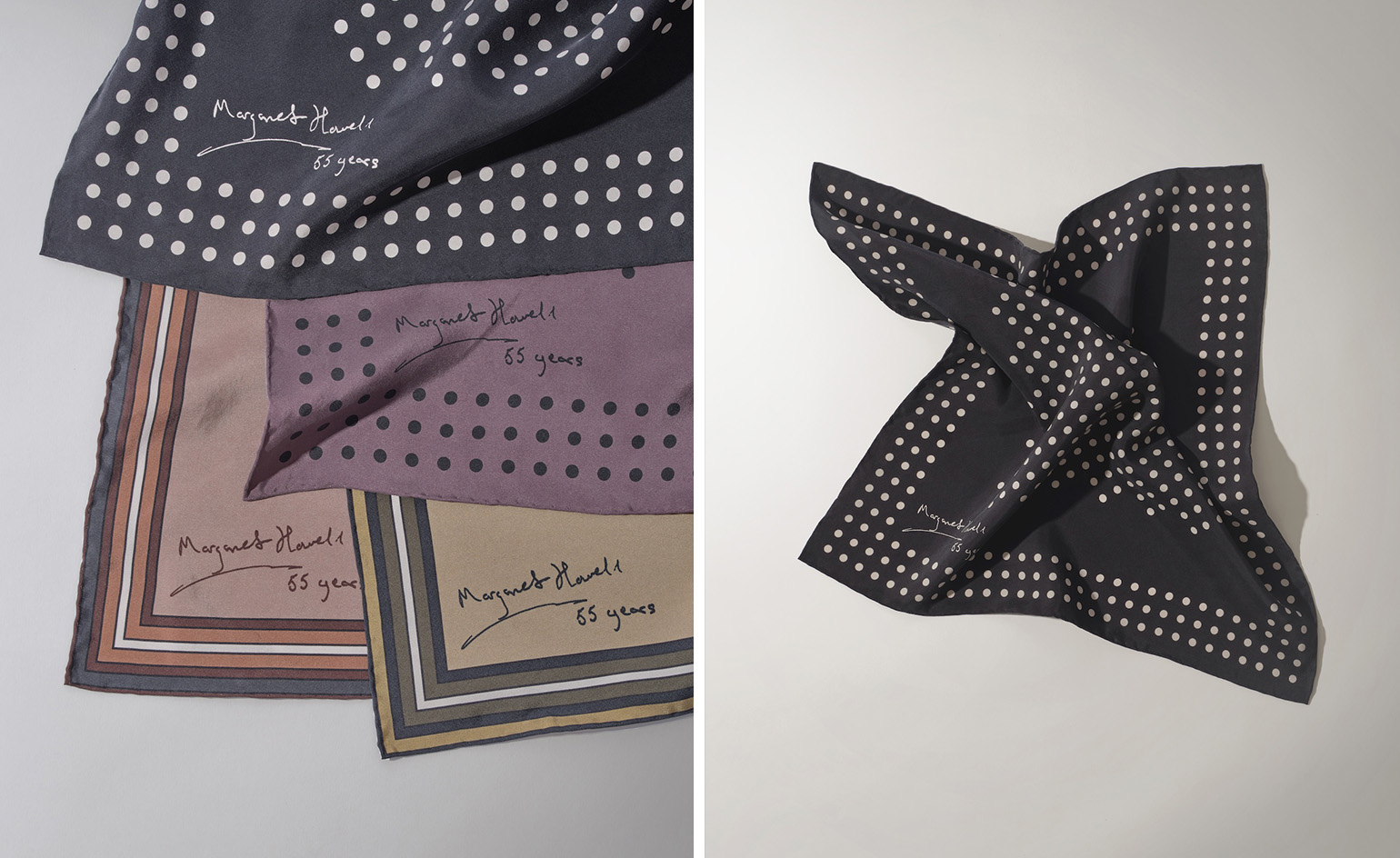 Margaret Howell marks 55 years in business by reissuing pieces from her archive
Margaret Howell marks 55 years in business by reissuing pieces from her archiveThe stalwart of British design will reissue a series of archival silk scarves to celebrate the landmark anniversary, alongside an era-traversing exhibition of foulards at the brand’s Wigmore Street store
-
 14 of the best new books for music buffs
14 of the best new books for music buffsFrom music-making tech to NME cover stars, portable turntables and the story behind industry legends – new books about the culture and craft of recorded sound
-
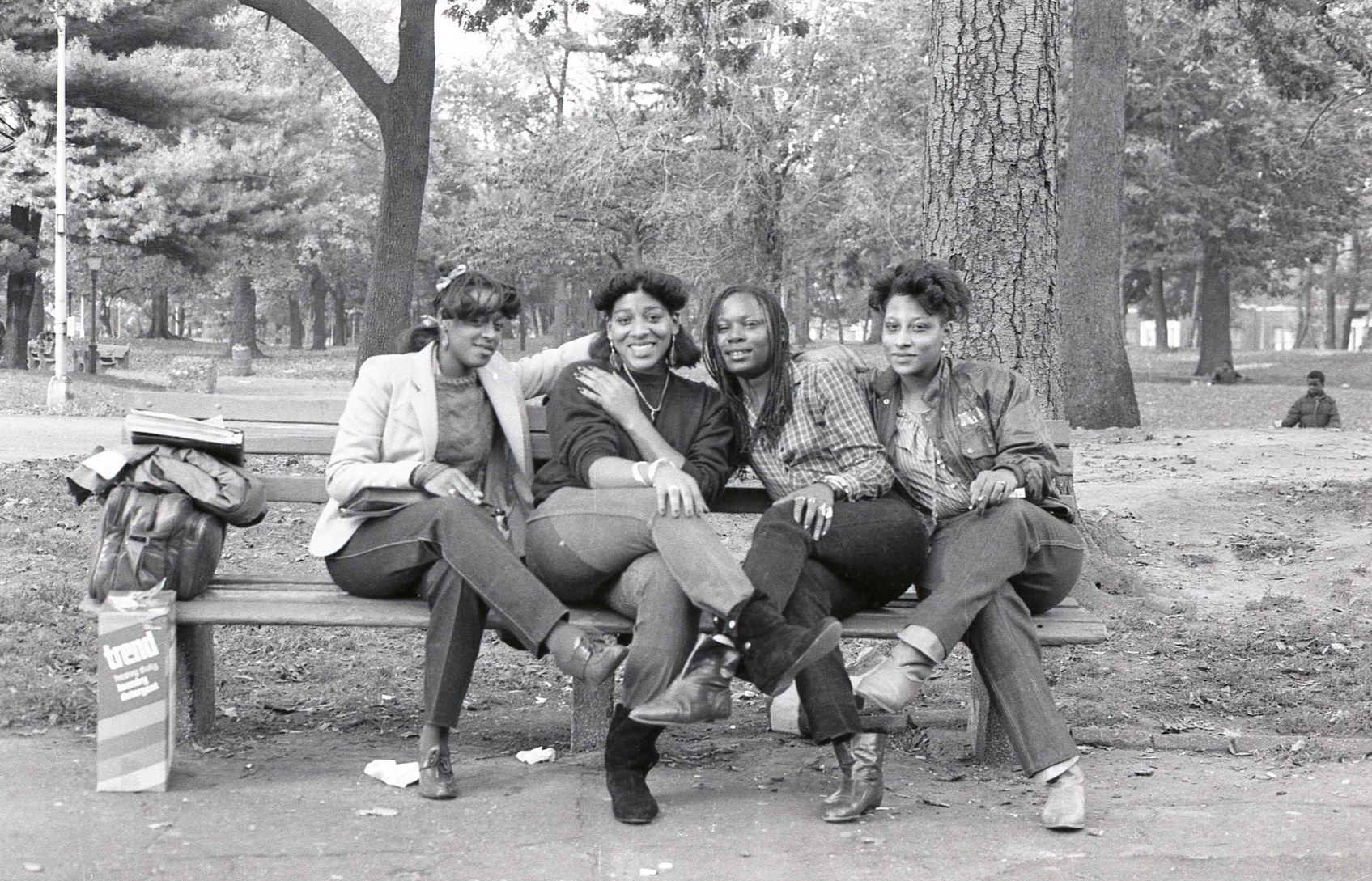 Jamel Shabazz’s photographs are a love letter to Prospect Park
Jamel Shabazz’s photographs are a love letter to Prospect ParkIn a new book, ‘Prospect Park: Photographs of a Brooklyn Oasis, 1980 to 2025’, Jamel Shabazz discovers a warmer side of human nature
-
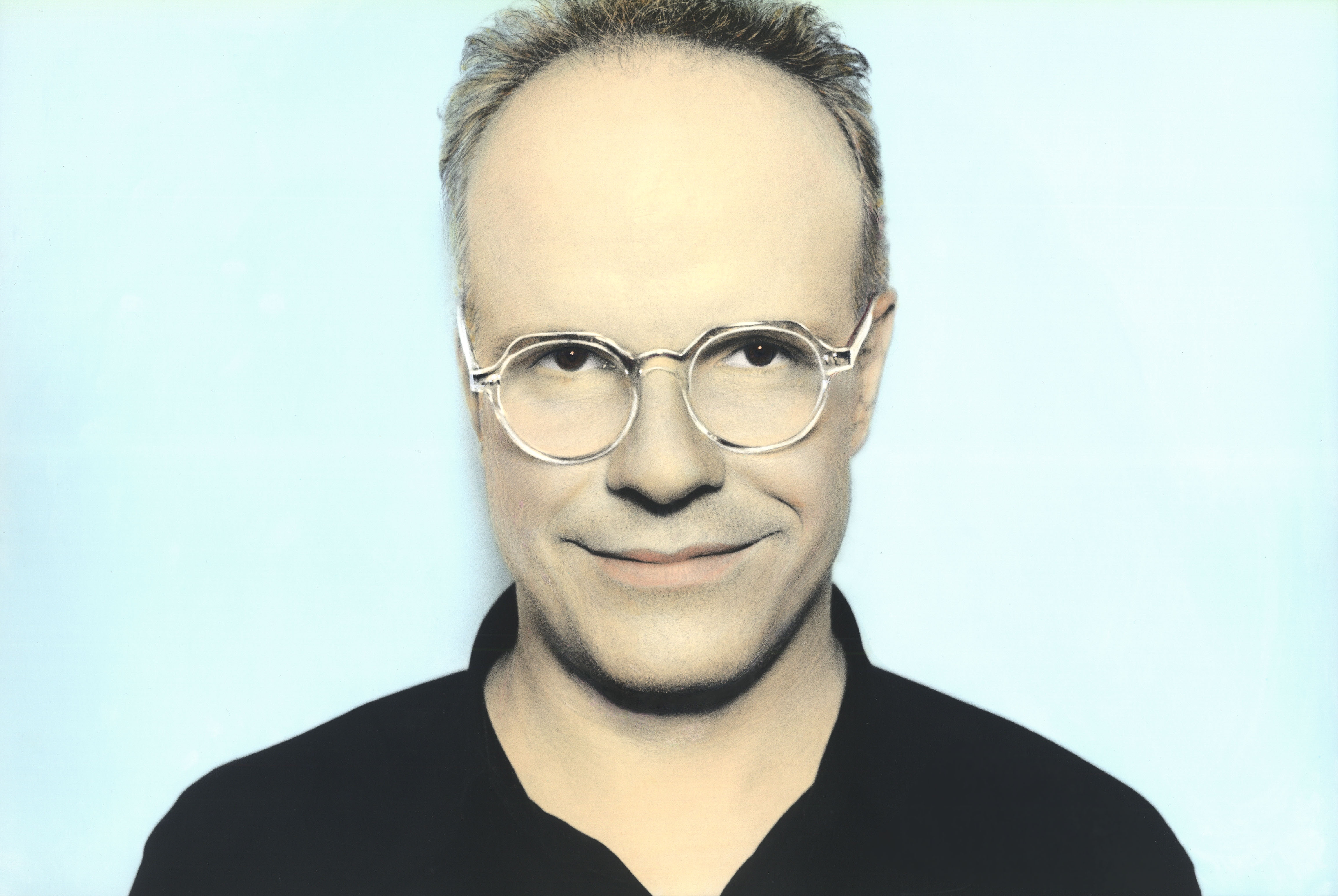 A life’s work: Hans Ulrich Obrist on art, meaning and being driven
A life’s work: Hans Ulrich Obrist on art, meaning and being drivenAs the curator, critic and artistic director of Serpentine Galleries publishes his memoir, ‘Life in Progress’, he tells us what gets him out of bed in the morning
-
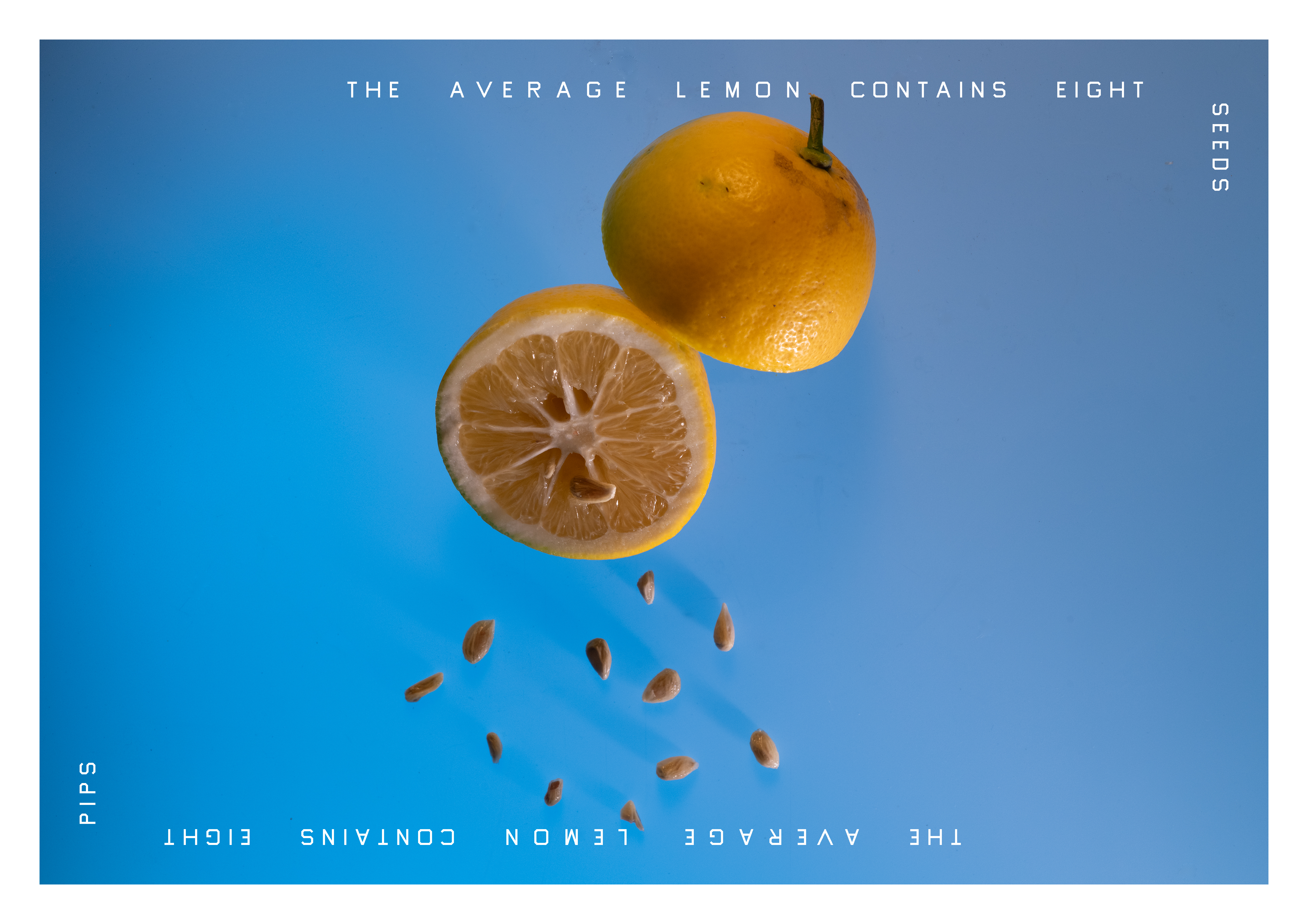 Ed Ruscha and Ruthie Rogers team up on zingy new cookbook
Ed Ruscha and Ruthie Rogers team up on zingy new cookbookEd Ruscha and friend Ruthie Rogers, chef and River Café co-founder, have teamed up on a cookbook with a difference
-
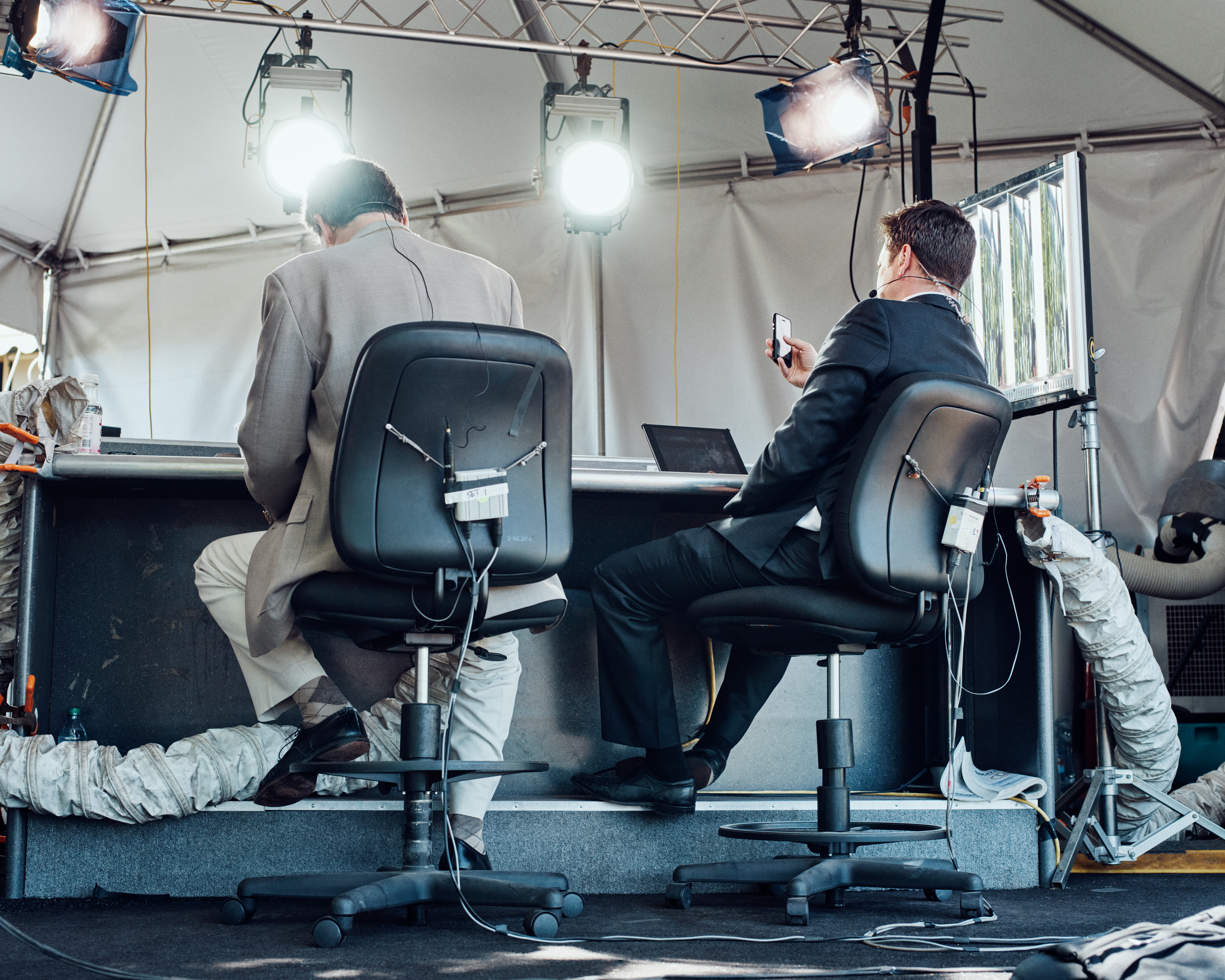 Thomas Prior’s photography captures the uncanny fragility of American life
Thomas Prior’s photography captures the uncanny fragility of American lifeA new book unites two decades of the photographer’s piercing, uneasy work
-
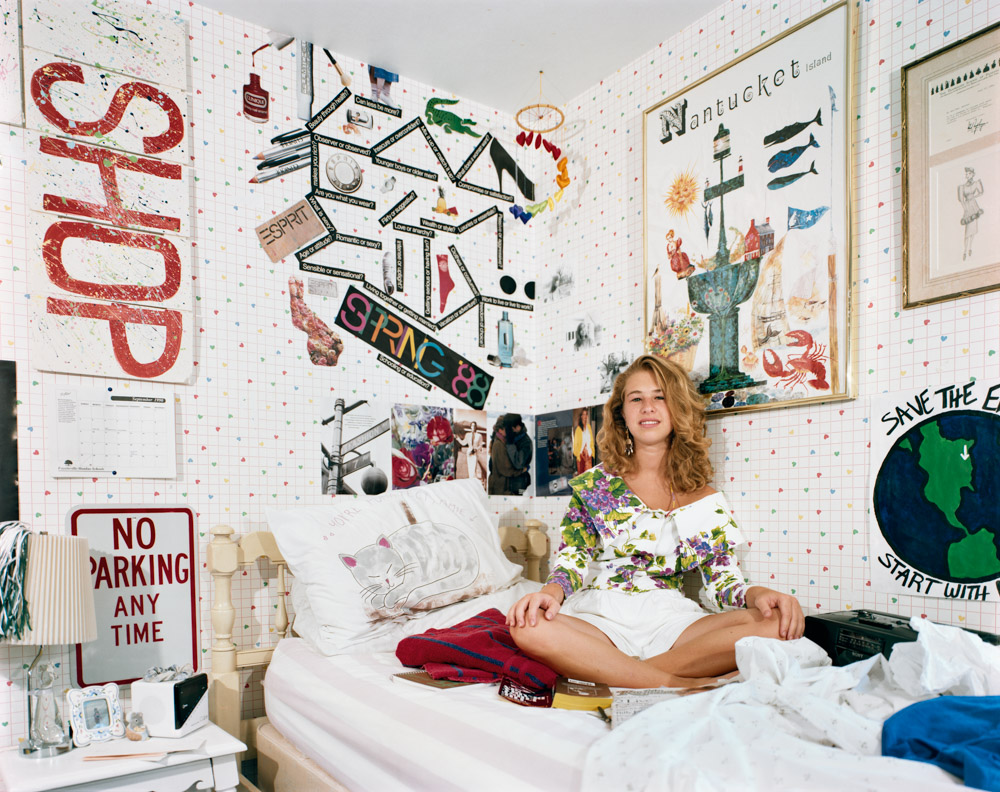 Cult classic ‘Teenagers in Their Bedrooms’ captures the angst of being a teen
Cult classic ‘Teenagers in Their Bedrooms’ captures the angst of being a teenAre 1990s teens so different? Three decades after its original release, this photography book by Adrienne Salinger has been published again, by DAP
-
 Make the Booker Prize shortlist your new reading list
Make the Booker Prize shortlist your new reading listThis year’s Booker Prize shortlist captures the emotional complexity of our times, with stories of fractured families, shifting identities and the search for meaning in unfamiliar places
-
 How to be butch: Clark Henley’s sharp, satirical and playful manual is back in print
How to be butch: Clark Henley’s sharp, satirical and playful manual is back in printThe 1982 classic, ‘The Butch Manual: The Current Drag and How to Do It’, full of tongue-in-cheek advice, is available once again